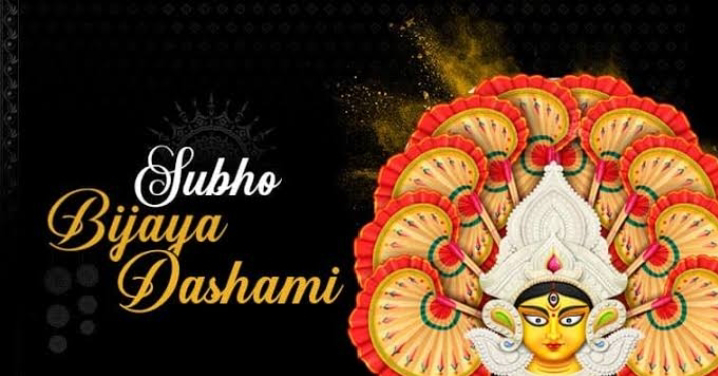Subho Bijaya Dashami Ki Katha .
Bijaya Dashami, also known as Dussehra, marks the triumphant conclusion of the ten-day Navaratri festival in Hindu tradition. The festival culminates in the celebration of the victory of Lord Rama over the demon king Ravana. According to the epic Ramayana, Lord Rama, accompanied by his loyal wife Sita and devoted brother Lakshmana, embarked on a journey to rescue Sita from the clutches of Ravana. After a fierce battle between Rama and Ravana, Rama, with the blessings of the goddess Durga, ultimately vanquished the demon king on the tenth day of the war.
The day of Bijaya Dashami is significant not only for the victory of good over evil but also for the symbolic triumph of righteousness and virtue. The burning of effigies of Ravana, his son Meghanada, and brother Kumbhakarna during Dussehra festivities represents the eradication of evil forces from our lives. Devotees across India participate in processions, prayers, and cultural events, reinforcing the values of courage, righteousness, and the ultimate victory of light over darkness.
Bijaya Dashami is not just a religious event; it is a cultural extravaganza that unites communities, fostering a sense of joy, harmony, and shared traditions. Families come together to exchange greetings, share festive meals, and seek blessings for a prosperous and virtuous life ahead. The story of Bijaya Dashami transcends religious boundaries, carrying a universal message of hope, courage, and the enduring power of good to overcome adversity.

Comments
Post a Comment